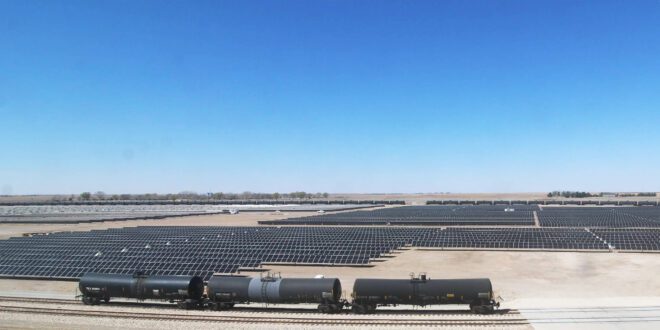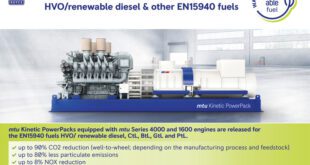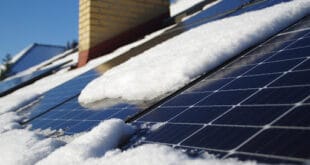By: Judy Samuelian, Director of Business Development at IHI Power Services Corp.
Whether you’re waking up to the sound of an alarm clock each morning, turning on a white noise machine before bed or running an AC unit on full blast during hot summer months— nearly everything we do requires energy, making power generation a vital component of our daily lives. In 2022, the United States alone used a total of 100.41 quadrillion British Thermal Units (Btu) of energy, meaning that each person living in the country contributed an average of 14.9 metric tons of CO2 emissions to the environment in just one year.
Within the context of energy production, sustainability means avoiding the depletion of natural resources and maintaining our population’s economic growth while sustaining our environment in order for humanity to continue to thrive. Most scientists agree that to accomplish this goal in technical terms we must reduce greenhouse gas output to approximately nine metric tons of CO2 emission per capita by 2030. Our country has pledged to support this effort via the Long-Term Strategy of the United States: Pathways to Net-Zero Greenhouse Gas Emissions by 2050—but with 2030 right around the corner, there is much to be done in order to meet this important initiative.
Understanding Sustainable Generation Challenges
Although the sun is the most dominant natural renewable source, harnessing its power is an incredibly complex process—and while the technology is available and steadily improving, it is just one component of the solar utilization process. Many other factors that come into play are either out of our hands completely or in need of further advancement.
First, we have no control over when the sun shines. Unlike other traditional power generation technologies with the ability to operate between 80% – 85% of the time, a solar site can generally only produce electricity around 30% – 35% of any given day or year. As a result, adding fuel on a need-to-need basis is not an option. For solar to become a consistently reliable source of baseload power, it requires additional technology to store and deploy the energy even when the sun isn’t out. And while there has been progress, experts also continue to grapple with large-scale economical solutions for effective and efficient long-term solar storage options.
Additionally, solar farms require 12-20 times more land to produce the same amount of energy as a traditional power generation facility. For example, Topaz Solar Farm, one of the largest commercial solar farms in North America, has nine million solar panels installed across 9.5 square miles to produce 550 MW of power. In comparison, a natural gas plant would only require about 20% – 30% of that physical space to generate the same or even more energy.
Wind generation is another popular renewable power harnessing technique and one of the oldest methods used by humans. However, this method requires the right technology and location deployment to ensure optimal results. Wind farms also present similar challenges to solar in that they typically produce power between 20% – 40% of the time, depending on the weather conditions, and demand significant land space as they increase in size. From an environmental standpoint, turbine blades are criticized for the risks they pose to migratory birds in addition to the fact that they are nearly impossible to repurpose or recycle and often end up in landfills.
The third most established clean generation source is hydropower. Hydropower is used to produce and store energy. A significant amount of power can be kept in complex reservoir systems, like the Hoover Dam, that move water around when energy is plentiful. Dams have been a historical part of our economic growth and power generation methods, but with rising environmental concerns over the years, new hydropower project developments are minimal.
How Can These Challenges be Met and Overcome?
A sustainable future is reliant on both the supply and demand-side of the overarching energy equation. Even the smallest changes in consumer behavior can leave a lasting impact but even still, all energy production comes with an associated cost. As a result, the most efficient way to increase sustainability is to reduce power usage. Consumers’ influence was seen most recently during the COVID-19 pandemic restrictions when per capita energy consumption fell to the lowest level since 1965. While this decrease may not be viable long-term, it showcases the inherent power of consumer decisions. There are tons of accessible ways to become an environmental steward and minimize our collective carbon footprint—these are as simple as replacing household lights with LED bulbs, turning off the television when you aren’t home or leave the room and raising your thermostat when you’re at work—to name just a few.
Experts, key decision-makers and the public continue to search for viable energy generation methods that meet the supply needs of our society while subsequently preserving the future of our planet. New technological advancements are being developed and refined every day and some new innovations are even being commercialized. Lithium-Ion battery energy storage, for example, allows energy captured at peak production times to be stored and used later when renewable fuel sources are not available for production or consumption. Other recent advancements are increasing solar panels’ spectrum for generation, improving wind turbine efficiency, enabling longer-term energy storage and more.
Additionally, the Inflation Reduction Act is a powerful piece of recent legislation that’s acted as a catalyst for much of innovation seen in the power generation industry today. This policy not only represents a deep-rooted U.S. commitment toward solving the sustainability challenges but also incentivizes greener energy production methods, like biomass, renewable natural gas projects and carbon capture modernization for current natural gas power production facilities.
The Future of the Power Industry and the Need for Sustainability
The power industry is intricately woven within the complex fabric of energy sustainability policies. Yet, our most paramount concern should be focused on finding eco-friendly power generation alternatives that can sustain our modern way of life while protecting our environment and its finite resources for generations to come. Therefore, it cannot be overstated that our policies, decisions and incentives have an equitable balance between the merits and drawbacks of current and newly proposed solution—meaning its incumbent upon us to not only chart a course toward a sustainable future that ensures the viability of our present existence but be realistic in the way we approach it. To do this, all decision-makers and experts on the energy value chain must come together with an open mind to refresh perspective and innovation—using current and future technologies— in order to find a feasible and long-term resolution.
About the author: As IPSC’s director of business development, Judy Samuelian brings over 20 years of experience in compliance, finance, contracts, process mapping and implementation to the power generation industry. Her diverse skills have allowed her to build long lasting relationships across sectors by evaluating the economic and social short- and long-term risks and rewards of business strategy.
 Alternative Energy HQ solar power for homes, wind energy, and bio fuel issues
Alternative Energy HQ solar power for homes, wind energy, and bio fuel issues







